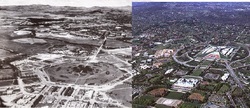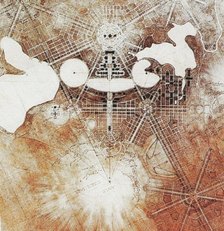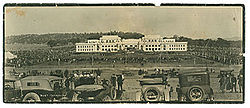Walter Burley Griffin and Marion Mahogany Griffin

Canberra represents an architectural dream whereby one man could effect the future lives of millions.A international contest was held to find the city's design. Canberra's special contrast between the urban living and nature was planned in 1912 by Chicago architect Walter Burley Griffin and Marion Mahogany Griffin after they were chosen to commence work at Canberra.
Heritage of the Land

Canberra had a rich Indigenous and farming heritage long before Australia's early politicians thought of choosing the area for the new federal capital in the early 1900's. From this time onwards the oldest buildings were acquired by the new federal government. The area's rural heritage became inextricably intertwined with its history as a purpose-built capital. Located on the ancient lands of the Aboriginal Ngunnawal people, the name Canberra is thought to mean "meeting place" from the Aboriginal word "Kamberra."
Design

The Griffin's plan featured circles, hexagons and triangles and was centred around axes aligned with significant landmarks in the Australian Capital Territory. The city's design was heavily influenced by the Garden City Movement and incorporates significant areas of vegetation earning the title "Bush Capital" for Canberra.
Parliament house

The provisional Parliament House opened in 1927 in what was then a treeless paddock.The building for the new Parliament House was designed by Mitchell and Giurgola architects and was opened by Elizabeth the Second former Queen of Australia on the 9th of May 1988. The building of New Parliament House began in 1981. The New Parliament House has a few deliberate immitations of Old Parliament House so tthat there is a slight resemblance despite the massive difference of scale.
